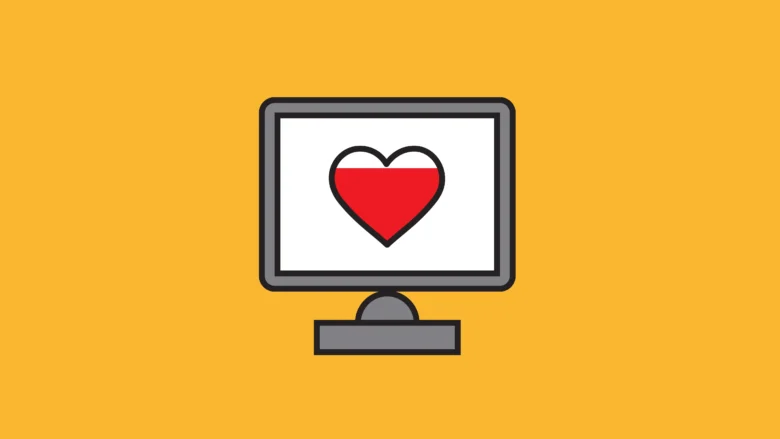Staying physically healthy through proper rest, regular exercise, and mindfulness activities is crucial to creating digital well-being. Break up prolonged browsing or work sessions with short breaks between them, and limit how many apps are open at one time. Use tools like screen time monitors and focus modes on smartphones to reduce distractions, such as daily app limits or scheduled break times. Some individuals find success using this gradual reduction approach.
1. Limit Your Screen Time
Keep a tab on how long you spend on your device by setting a screen time limit and keeping track of how much time is being spent using digital platforms like mobile phones and tablets. Setting this screen time limit can help keep your digital habits under control and give them some stability. Create tech-free periods throughout your day, such as mealtime and bedtime. The absence of technology will enable you to focus on real interactions with others while creating mental restfulness.
Google Digital Wellbeing and Apple Screen Time offer tools that will allow you to set daily app limits. They will notify you if you reach their limit, providing an alert when this threshold has been reached and helping to refocus with brief meditation or exercise sessions. In addition, these apps have wind-down features that enable Do Not Disturb before bedtime as well as fade your screen back into grayscale mode for relaxation before going to sleep.
2. Take a Tech Break
An occasional technology break can help improve digital well-being by helping you reengage with both your physical and mental selves. Connecting with yourself through physical activities may reduce stress levels, while taking a tech break can relieve eye strain, improve focus, and prevent burnout.
Develop tech break habits by recognizing triggers and establishing healthy boundaries. For example, try setting aside an hour before bedtime as screen-free time. Take time out from technology by practicing mindfulness or engaging in non-tech-related hobbies like painting, gardening, cooking, or going for a walk.
3. Turn off Notifications
People often feel as though their lives are consumed with emails, texts, and social media—this constant flow can become stress-inducing.
Use digital well-being tools to limit smartphone use and create healthy tech habits to unplug and recharge. Apps like Screen Time on iOS or Digital Wellbeing on Android provide tracking features as well as timers and limits for phone usage. Apps that enable you to manage notifications or pause social feeds can reduce distraction and help protect from feelings of inadequacy or envy caused by posts that portray an unrealistic version of life.
4. Limit your screen time before bed.
Reduced screen time before bed can help you unplug and find better restful slumber. Reducing exposure to blue light, which interferes with melatonin production, makes falling asleep harder; additionally, it encourages healthy sleeping practices as well as mindfulness practices.
Consider installing an app on your phone that restricts certain applications during certain time frames, like dinnertime or bedtime, to curb impulsive checking and create healthy digital habits that stick. This can help limit unnecessary scrolling while helping build better digital habits that stay with you over time. Engage in activities that don’t rely on technology, like reading physical books or going for a walk. Practice digital mindfulness—asking yourself why you are reaching for your device before picking it up—before reaching for one again.
5. Take a Tech Break
Unplugging allows you to escape the online noise and focus on other activities. For instance, unplugging can help you take a step back from social media, hike through nature trails, or learn a new hobby without your phone. A regular digital break may help relieve stress and improve performance at work; try setting limits with Google Digital Wellbeing or Apple Screen Time apps, limiting screen time or task switching (keeping one browser tab open at all times rather than constantly switching tasks)
An intense digital detox may not be necessary for everyone, but cutting back on device usage may help you feel calmer and in control of your digital life.
6. Turn off Notifications
If you find yourself checking your phone, texting, or browsing Facebook at an alarmingly rapid rate, turning off notifications can help keep you focused on work without distracting moments of critical importance. Studies reveal that rapid task switching can seriously hinder our concentration, it takes between 70 seconds and 23 minutes to regain focus after switching tasks online.
Unplug by planning offline activities that naturally pull you away from your phone—baking holiday cookies or attending a tech-free dinner with friends are great ways to unplug. Such experiences can reduce stress, promote mindfulness, and foster positive relationships.
7. Limit your screen time.
Spending too much time staring at screens can cause eye strain and other health problems, but making small changes that have an immediate and positive effect is simple and manageable—such as using an app that monitors usage or setting aside a tech-free time for sleep, which can make a big difference in quality of sleep.
Replace screens with activities such as reading, meditation, or exercising; less time on social media will reduce FOMO while encouraging real-world relationships among friends. Make use of apps such as Moment or RescueTime to monitor and limit your usage, or implement screen time rules within your home, such as no phones before breakfast or charging devices outside bedrooms.
8. Take a Tech Break
Implementing technology-free moments into your daily and weekly routine can help restore your relationship with digital devices, as well as spur other offline pursuits such as reading, exercise, and engaging with friends and family.
At home or work, it may also be wise to create tech-free zones by not using your phone in these spaces. Perhaps consider keeping it out of sight and reach—in a drawer, say—so as not to indulge in mindless scrolling and notifications at dinner time or become habitual when trying to use social media platforms such as Instagram. Incorporating tech-free rituals can help break this habit and keep “always on” culture at bay.
9. Turn off Notifications
Losing track of how much time you are spending online can be easy; luckily there are tools available that can help monitor and modify your tech usage habits.
As an example, iPhones offer Screen Time with monitoring and control options to limit screen time consumption, while Android phones feature the Digital Wellbeing app, which lets you set a screen time goal, use the Screen Time dashboard to monitor usage patterns across apps, configure app timers, and manage wind-down mode—helping prepare you for sleep by dimming screen brightness, changing its hue to grayscale mode, and muzzling notifications.




